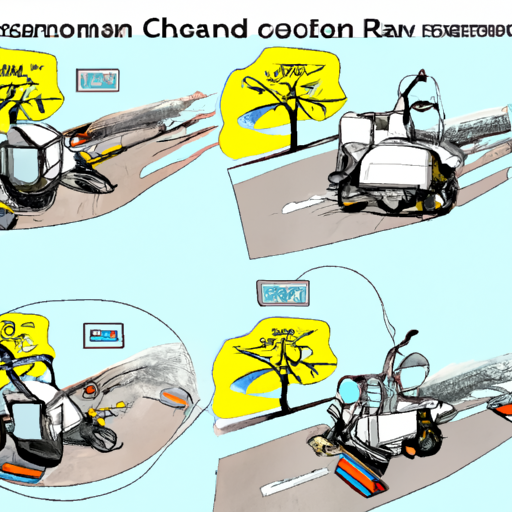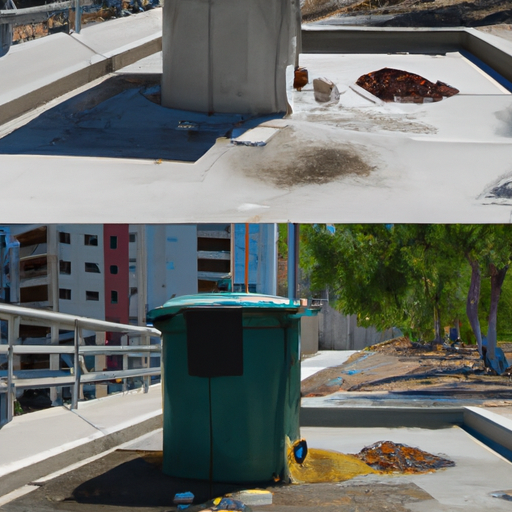Are you tired of traditional and inefficient road cleaning methods? Take a quantum leap into the future of road maintenance with our guide: 'Road Cleaning Innovations: Cutting-Edge Technologies for Superior Results'. Discover the latest advancements in street cleaning technology, learn how they are revolutionizing urban sanitation, and find out how you can leverage them for optimal results.
1. 'The Evolution of Road Cleaning: Where are we now?'
Road cleaning has come a long way from the days of manual brooms and basic street sweepers. Today, we find ourselves at the forefront of cutting-edge technologies that are revolutionizing how we keep our roads clean. Gone are the days of relying solely on human labor and traditional cleaning methods. Now, we have sophisticated machines and advanced systems that are capable of achieving superior results in a fraction of the time.
One of the key advancements in road cleaning technology is the development of automated street sweepers. These machines are equipped with high-powered brushes and vacuum systems that efficiently remove dirt, debris, and even leaves from the roads. They are designed to navigate through narrow streets and corners, ensuring that every nook and cranny is thoroughly cleaned. Additionally, these sweepers are equipped with sensors and cameras that allow them to detect obstacles and adjust their cleaning patterns accordingly.
Another significant advancement in road cleaning technology is the use of waterless cleaning systems. Traditionally, road cleaning involved using water to wash away dirt and grime. However, with water scarcity becoming a growing concern, innovative technologies have been developed to clean roads without the need for water. These systems use high-pressure air and specialized brushes to remove dirt and debris, resulting in a more sustainable and efficient cleaning process.
Furthermore, the integration of smart technology has also played a pivotal role in the evolution of road cleaning. Automated systems can now monitor the cleanliness of roads in real-time and deploy cleaning crews or machines accordingly. This not only saves time and resources but also ensures that roads are consistently clean and safe for motorists. Additionally, data collected from these smart systems can be analyzed to identify high-traffic areas or problem spots that require more frequent cleaning, allowing for a targeted approach to road cleaning.
1. An illustration showing the evolution of road cleaning methods from manual sweeping to automated machines.
2. 'Sweeping Changes: What are the Latest Innovations in Road Cleaning Technology?'
The latest innovations in road cleaning technology are revolutionizing the way we keep our streets clean. One such innovation is the use of autonomous sweepers. These advanced machines are equipped with artificial intelligence and sensors that allow them to navigate the roads on their own, efficiently cleaning as they go. They can detect and avoid obstacles, adjust their cleaning patterns based on the road conditions, and even recharge themselves when needed.
Another exciting development is the integration of robotic technology in road cleaning. Robotic sweepers are designed to work alongside human operators, taking over the repetitive and physically demanding tasks. These robots are equipped with state-of-the-art brushes and vacuum systems that can effectively remove dirt and debris from the roads, ensuring a thorough and efficient cleaning process.
In addition to autonomous and robotic sweepers, there have been significant advances in the development of eco-friendly road cleaning technologies. For example, electric-powered sweepers are becoming increasingly popular as they eliminate the need for fossil fuels and reduce carbon emissions. These sweepers are not only environmentally friendly but also quieter, making them ideal for urban areas where noise pollution is a concern.
Furthermore, the use of advanced imaging and sensing technologies has revolutionized road cleaning. High-resolution cameras and sensors can detect dirt, debris, and even hazardous materials on the roads. This data can then be analyzed to optimize cleaning routes, allocate resources efficiently, and identify areas that require special attention.
Finally, the integration of machine learning and artificial intelligence has transformed road cleaning. These technologies allow the sweepers to learn from past experiences, adapt to changing road conditions, and optimize their cleaning strategies. By constantly analyzing data and improving their performance, these intelligent sweepers deliver superior results and contribute to more effective road cleaning practices.
3. 'The Impact of Technology: How are these Innovations Improving Urban Sanitation?'
Urban sanitation is a critical aspect of maintaining clean and healthy cities. The latest innovations in road cleaning technology have had a significant impact on improving urban sanitation in several ways.
- 1. Enhanced Efficiency:
The use of autonomous sweepers and robotic technology has greatly improved the efficiency of road cleaning operations. These advanced machines can cover larger areas in less time compared to traditional cleaning methods. With their ability to navigate autonomously and adapt to changing conditions, they can clean streets more frequently and effectively. This increased efficiency ensures that urban areas remain clean and free from debris, enhancing overall sanitation. - 2. Environmental Benefits:
The integration of eco-friendly technologies in road cleaning has had a positive impact on urban sanitation and the environment. Electric-powered sweepers reduce carbon emissions and contribute to cleaner air quality, making them a sustainable choice for urban areas. Additionally, the use of sustainable materials in the construction of these sweepers further reduces the environmental footprint. By adopting these technologies, cities can improve sanitation while also prioritizing environmental conservation. - 3. Safer and Healthier Environments:
The advanced imaging and sensing technologies used in road cleaning have improved the safety and health aspects of urban sanitation. These technologies can detect and remove hazardous materials, such as broken glass, sharp objects, or chemical spills, from the roads. By promptly addressing these potential hazards, the risk of accidents and injuries to pedestrians and vehicles is minimized. Moreover, cleaner streets contribute to a healthier environment by reducing the presence of allergens and pollutants, improving the overall well-being of urban residents.
3. A before and after photo showcasing the impact of these technologies on urban sanitation.
4. 'Embracing the Future: How can you Leverage these Technologies for Superior Results?'
As the road cleaning technologies continue to evolve, it is crucial for cities and municipalities to embrace these innovations and leverage them for superior results in urban sanitation. Here are three ways you can make the most of these cutting-edge technologies:
- 1. Investment in Infrastructure:
To fully leverage the benefits of road cleaning technologies, it is essential to invest in the necessary infrastructure. This includes integrating smart sensors and communication systems to enable seamless coordination between sweepers and city management. Additionally, creating charging stations for electric-powered sweepers ensures their uninterrupted operation. By investing in the right infrastructure, cities can maximize the effectiveness of these technologies and achieve superior results in road cleaning. - 2. Training and Education:
Adopting new technologies requires proper training and education for the personnel involved in road cleaning operations. Providing comprehensive training programs on operating and maintaining autonomous sweepers and robotic technology is crucial. This enables the workforce to effectively utilize the capabilities of these advanced machines and ensures optimal performance. By investing in training and education, cities can enhance their road cleaning capabilities and achieve superior results in terms of efficiency and effectiveness. - 3. Collaboration and Partnerships:
Collaborating with technology providers and industry experts can further enhance the utilization of road cleaning technologies. By partnering with companies specializing in autonomous sweepers or robotic technology, cities can gain access to the latest advancements and tailor the solutions to their specific needs. These partnerships can also provide valuable insights and guidance on best practices for implementing and optimizing these technologies. By fostering collaboration and partnerships, cities can leverage the expertise of industry leaders and achieve superior results in urban sanitation.
Road Cleaning Innovations:
| Technology | Uses | Advantages | Disadvantages |
|---|---|---|---|
| Autonomous Vacuum Cleaners | Can be used for small streets and sidewalks | No need for manual labor, time and cost-efficient | High cost of acquisition |
| Robotic Street Sweepers | Can be used for small streets and sidewalks | No need for manual labor, time and cost-efficient | High cost of maintenance |
| Pressure Washers | Can be used for large streets and highways | Easy to use and maintain | High water consumption |
| GPS-Enabled Trash Cans | Can be used for large streets and highways | Highly efficient garbage collection | Expensive to install |
In conclusion, the future of road cleaning is here, and it's more efficient, cost-effective, and environmentally friendly. By embracing these cutting-edge technologies, we can not only improve urban sanitation but also contribute to the sustainability of our planet. So, are you ready to be a part of this change?



